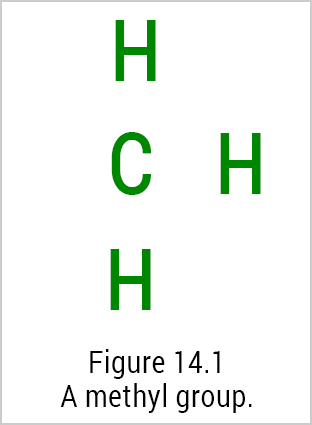- Home
- Find A Physician
- FIND A PHYSICIAN
- LymeTimes
- Current Issue
- Archives
- FEATURED LYMEDISEASE.ORG ISSUES
- Resources
- LYME LITERATE PHYSICIAN VIDEOS
- Physicians
- Members
- About Us
- Resources
While methylation is an important component of health and a common problem for patients suffering from chronic illnesses, it has been receiving an unusual amount of attention lately, elevating its importance to heights that are, perhaps, out of proportion to the role that it plays. I am devoting a chapter to methylation in the hope that I can help put the whole concept into perspective.
What Is Methylation?
 W hile it may sound complicated, methylation is simply the biochemical process of adding a methyl group to a molecule. A methyl group consists of a carbon atom surrounded on three sides by hydrogen atoms, allowing the fourth side (to the left of the central carbon atom in Figure 14.1) to bind to another substance.
W hile it may sound complicated, methylation is simply the biochemical process of adding a methyl group to a molecule. A methyl group consists of a carbon atom surrounded on three sides by hydrogen atoms, allowing the fourth side (to the left of the central carbon atom in Figure 14.1) to bind to another substance.
The process of methylation is basic to hundreds of important biochemical reactions in the body. The most important of these is creating glutathione, which is a central material in creating energy, detoxifying, and dealing with free radical buildup. The body uses methylation itself for detoxifying, repairing damaged DNA, converting serotonin to melatonin, and many other critical processes.
The most common symptoms of methylation deficiency, or an inability to methylate properly, are fatigue, cognitive impairment, pain, and insomnia.
Let’s begin with a little history of how methylation rose to the top of the to-do lists of functional medicine physicians.
How Methylation Came to Prominence

Rich Van Konynenburg, PhD, spent his career as a pioneering engineer who became a major troubleshooter for the Livermore National Laboratory. After his retirement, he became fascinated by the difficulties faced by patients with myalgic encephalopathy/chronic fatigue syndrome (ME/CFS) and fibromyalgia. He spent several years researching the biochemistry of these illnesses, and in 2003 he wrote a seminal paper suggesting that methylation chemistry, when not functioning properly, could explain virtually all of the clinical findings in ME/CFS.
 This hypothesis was developed from the work of Amy Yasko, PhD, who was working with autistic children. Dr. Yasko suggested that autism was the form that illness took in younger patients and was similar to ME/CFS and fibromyalgia in adults and to neurodegenerative diseases in older patients.
This hypothesis was developed from the work of Amy Yasko, PhD, who was working with autistic children. Dr. Yasko suggested that autism was the form that illness took in younger patients and was similar to ME/CFS and fibromyalgia in adults and to neurodegenerative diseases in older patients.
Dr. Van Konynenburg was still having trouble convincing physicians to take his work seriously when I heard him speak at a medical meeting in 2007. I was so intrigued by the logic and simplicity of his ideas that when I got home from the meeting, I immediately placed fifty-one patients with ME/CFS and fibromyalgia on the five supplements that Dr. Van Konynenburg had developed from Dr. Yasko’s work and that he described as a “simplified methylation protocol.” Essentially, this protocol consisted of hydroxocobalamin (hydroxy-B12), a tiny dose of 5-methyltetrahydrofolate (5-MTHF), and several other supplements to support methylation chemistry.
After several months of taking these supplements, 70 percent of my patients noted definite improvements, and 20 percent reported that they felt markedly better. This was the first time that Dr. Van Konynenburg’s hypothesis had been tested, and he was delighted with our initial results…….Join or login below to continue reading.
You must be a LymeDisease.org member to access this content.





























